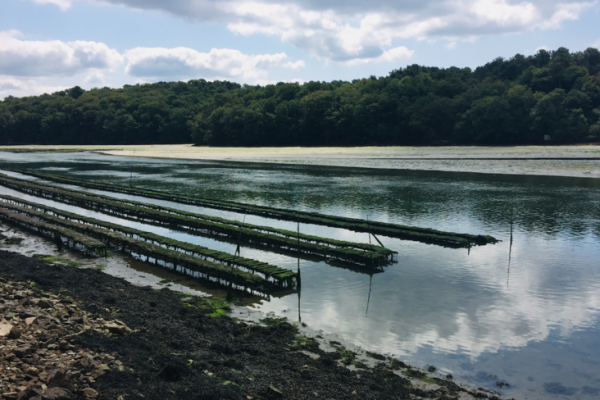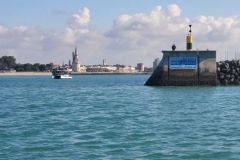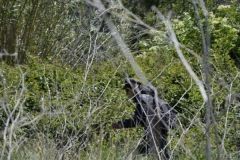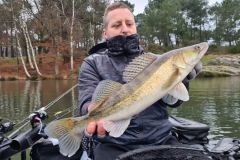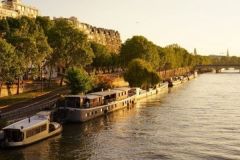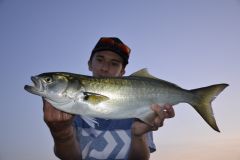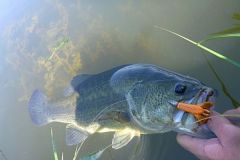Oyster beds, ideal for bass fishing
The oyster beds are covered and uncovered by the ebb and flow of the tide, and of course by the tidal range. These structures provide shelter and food for the fish that live in these areas, notably sea bass and mullet.
Crabs, shrimps and small fish live close to these structures, which provide them with hiding places. Predators are often not far away.
Not all parks are created equal. Some are more interesting than others for different reasons. The main one being the presence of oysters in the pockets. This attracts crabs, shrimps and small fish, and therefore predators. The second is their position in relation to other beds, current, bottom structure, etc.
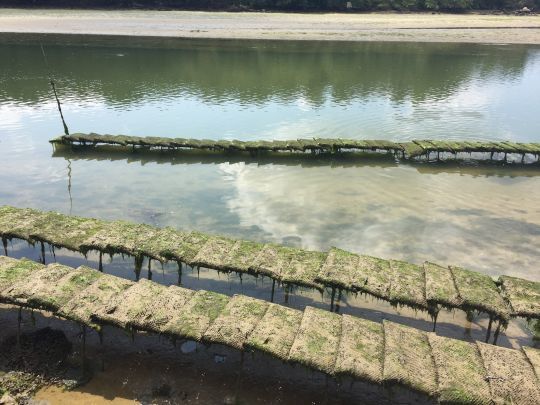
Sight fishing
When the tide is out, but there's still a little water below the pens, mullet and sea bass thread their way between the tables in search of food. Whether the tide is late ebb or early flood, the level allows you to fish between these rows of tables when the local oyster farmer allows you access and practice your hobby.
It's often at these times that sea bass can be seen sneaking around in search of prey. Sea bass are often active and small chases can break out quite often. However, catching them on sight is not easy. Big bass are wary. You have to walk very slowly along the tables to catch the bass marauding in search of food, either alone or in small groups.
If you use imitation crabs or shrimps, you'll be able to bite them fairly regularly. The hardest part is getting them out of the pens. It is therefore advisable to increase the diameter of your tip to try to extract them quickly, or at least to bridle them as much as possible. Personally, I prefer the last pockets of the tables to get the fish out of the structures and avoid breakage.
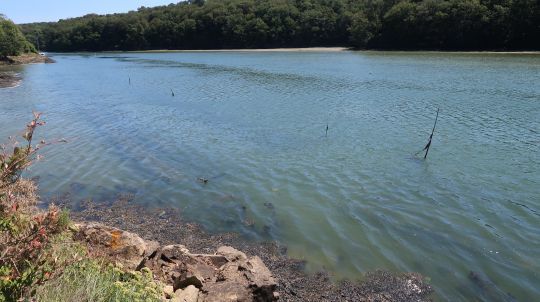
Surface fishing
When the water level is just above the parks, up to 1 to 2 meters maximum, surface fishing with popper and gurgler flies can be effective, and in any case, great fun.
Whether the tide's coming in or going out, it's often at low tide that it works best. The hits are spectacular and guarantee a good adrenaline rush!
The same problem as before: you have to stop them getting back into the tables, otherwise they'll break!
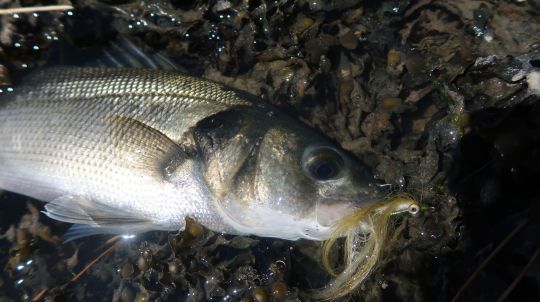
Streamer fishing
Initially, when the water level is about one meter above the tables, light streamer fishing with floating silk can work. Be careful not to let the fly sink too much, otherwise you'll get hooked and lose it.
When there's at least two meters of water on the parks, I personally prefer to go after them with a streamer, but with an intermediate line. Weighted streamers such as clouser minnows are excellent for this type of fishing, as they bring the fish as close as possible to the tables. Otherwise, it's up to the bass to fetch your fly, using unweighted flies such as deceivers, surf candy and other imitations forage fish (mullets, sprats, laces, smelts, etc.).
Tip:
To limit snags, I advise you to mount your flies with weed guards or, for streamers, with the bristles or fibers on top of the hook. In other words, with the hook pointing upwards.

 /
/ 